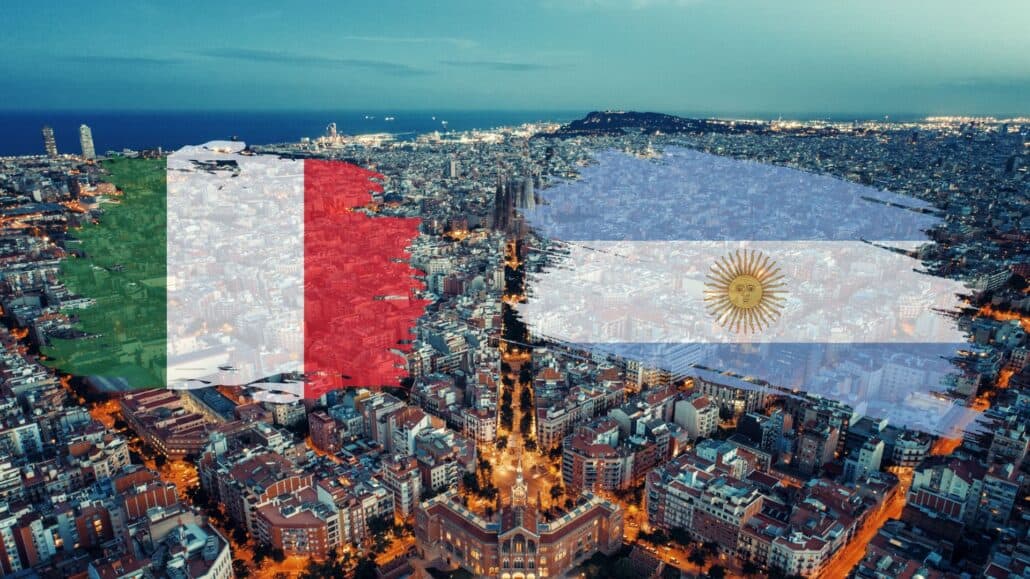Which of these two groups is the larger? Does it depend on how that population is measured? Let’s unravel this question.
Barcelona, a cosmopolitan and multicultural city, is home to a diversity of nationalities that contribute to its cultural and social richness. Among the most prominent foreign communities in the Catalan capital are Argentines and Italians.

The demographic panorama of Barcelona
According to the municipal census of inhabitants of Barcelona, the city had 1,660,435 residents at the beginning of 2023. Within this figure, a significant percentage corresponds to people of foreign origin. But determining which group is the largest among Argentines and Italians requires a detailed analysis.
Over the course of three decades, Barcelona has gone from being a fairly uniform community, with just 1.5% foreign population in 1991, to 23.6% today. This increase is mainly attributed to an intense migratory wave during the first decade of the 21st century, which marked a drastic change in the demographic composition of the city. In 2001, only 4.8% of the population was foreign, a figure that increased to 17.5% in 2010. After a period of stability for five years, renewed growth was observed from 2016 onwards, exceeding 20% in 2019, progressively approaching 25%.
Differences in demographic measurement
The approach to determining the largest population among Argentines and Italians varies depending on the criteria used. Based on place of birth, Argentines appear to lead with approximately 41,097 residents, according to the statistics. However, if we consider legal nationality, Italians occupy the first place, with more than 45,000 people.
Impact of Italian legislation
The explanation behind this phenomenon lies in Italian nationality legislation. Italy has laws that allow people to prove their Italian ancestry to obtain citizenship, which has led to a sizeable Italian-Argentine population in Barcelona. This phenomenon is largely due to Italian migration to South America in the 19th and 20th centuries, which has left a significant cultural and demographic legacy in the region.
Freedom of mobility and European citizenship
A crucial aspect is that Italian citizens, being part of the European Union, enjoy freedom of mobility and residence in other member countries. This means that, beyond their place of birth, Italians have legal advantages that Argentines or other nationalities do not have.
Diversity as a hallmark of Barcelona
Beyond the comparison between Argentines and Italians, Barcelona is a city that welcomes people of 177 different nationalities. This melting pot of cultures and backgrounds contributes to the richness and vitality of the city, making it a vibrant and diverse place.
In conclusion, determining whether there are more Argentines or Italians in Barcelona depends on the criteria used to measure the population. While Argentines lead in terms of place of birth, Italians outnumber Italians when legal nationality is considered, influenced by Italian citizenship laws. However, beyond these figures, Barcelona remains a welcoming and diverse city, where multiculturalism is celebrated and valued as part of its unique identity.
